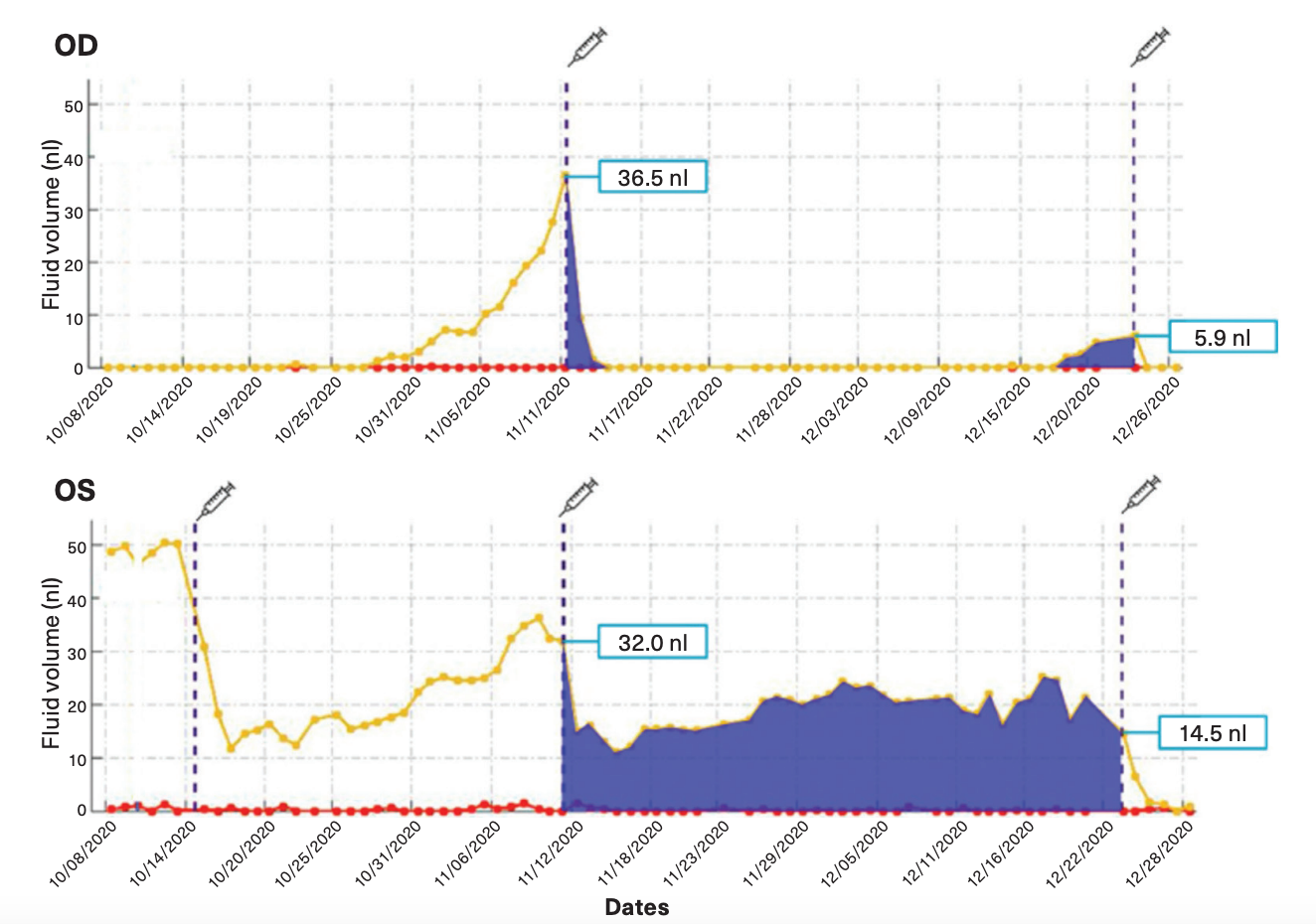Wet AMD home monitoring systems provide high-quality scans
Patients can get real-time disease monitoring with self-operated device.
Reviewed by Anat Loewenstein, MD

The feasibility of Home OCT monitoring (Notal Vision, Inc) with a patient self-operated device, automated data transmission, and analysis for disease surveillance was demonstrated in a longitudinal at-home pilot study1 in patients with wet age-related macular degeneration (AMD).
Such daily monitoring can result in fewer office visits, earlier detection of reoccurrence of fluid resulting in faster retreatment, and elimination of unnecessary routine injections of antivascular endothelial growth factor (VEGF) therapy, according to senior author Anat Loewenstein, MD, from the Division of Ophthalmology at Tel Aviv Sourasky Medical Center and the Sackler Faculty of Medicine at Tel Aviv University in Tel Aviv, Israel.
Loewenstein and her colleagues evaluated the performance of the home-monitoring technology that includes a spectral-domain optical coherence tomography (OCT) device by which patients perform self-imaging, automated uploading of data, and a deep learning algorithm for automated OCT analysis.
The goals of the study, she explained, were to evaluate the technology’s performance in daily image acquisition and automated analysis and to characterize the dynamics of retinal fluid exudation in patients with neovascular AMD.
Pilot study
Intraretinal fluid (red) and subretinal fluid (yellow) volume trajectories from Notal OCT Analyzer segmentation of daily Home OCT self-images of a patient’s right and left eyes. Retinal fluid exposure described by the area under the curve between treatments (syringe) differs significantly between eyes despite similar fluid volumes measured on the day of office treatment visits, illustrating the medical insights gained from daily OCT imaging at home. (Data courtesy of Notal Vision Inc)

This prospective, observational longitudinal study included 4 patients (mean age, 73.8 years) with unilateral or bilateral neovascular AMD who were being treated with anti-VEGF therapy.
The participants monitored themselves at home using the Home OCT device for up to 3 months.
Each time they completed the self-imaging, the macular cube scans were uploaded automatically to the Notal Health Cloud. The Notal OCT Analyzer and human graders evaluated the scans for fluid, segmentation, and volume.
The main outcomes of the study were determination of the completion of the daily self-imaging, image quality and acquisition time, agreement between the automated and human grading of retinal fluid, and the temporal dynamics of fluid volume, Loewenstein described.
The 4 patients initiated a total of 240 self-imaging attempts. Of these, 211 (87.9%) were completed successfully. Of the completed attempts, 97.6% had satisfactory image quality.
Regarding the presence of retinal fluid, the automated analysis and human graders agreed in 94.7% of cases.
When the investigators looked at a subset of 24 scans in which fluid was present, the correlation coefficient between the measurements of the fluid volume between the automated and human graders was 0.996 and mean absolute difference 1.5 nanoliters. The respective interhuman agreements were 0.995 and 1.2 nanoliters.
The scans demonstrated wide variations in the dynamics of fluid exudation and treatment responses, according to Loewenstein.
Based on the results, the investigators concluded that the study patients were able to perform daily self-imaging at home and generate macular cube scans that were of satisfactory quality.
The agreement between the automated analysis and the human graders was high.
In addition, the technology facilitated characterization of the dynamics of fluid exudation and showed wide variation between eyes, which may lead to relevant disease biomarkers.
“Home OCT telemedicine systems offer an alternative for physicians to monitor disease and may allow highly personalized retreatment decisions, with fewer unnecessary injections and clinic visits,” Loewenstein concluded. “The review of remote OCT data will offer billing opportunities for ophthalmologists who utilize the service of a remote monitoring center that provides Home OCT service to patients.”
--
Anat Loewenstein, MD
E: anatl@tlvmc.gov.il
Loewenstein has no financial disclosures related to this content.
--
Reference
1. Keenan TDL, Goldstein M, Goldenberg D, Zur D, Shulman S, Loewenstein A. Prospective longitudinal pilot study: daily self-imaging with patient-operated home OCT in neovascular age-related macular degeneration. Ophthalmol Sci. Published online June 25, 2021. doi:10.1016/j.xops.2021.100034
Related Content: Imaging | Ophthalmology | Wet AMD
Newsletter
Keep your retina practice on the forefront—subscribe for expert analysis and emerging trends in retinal disease management.